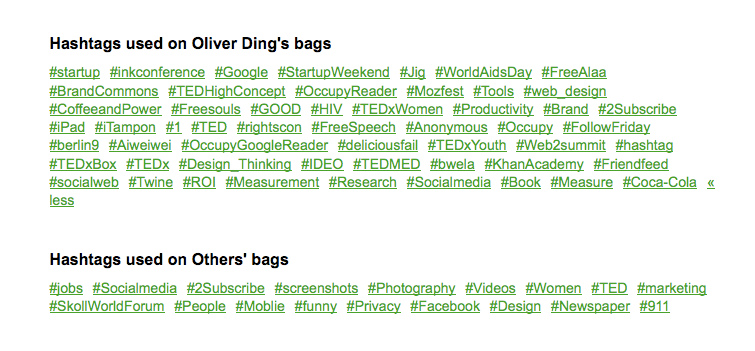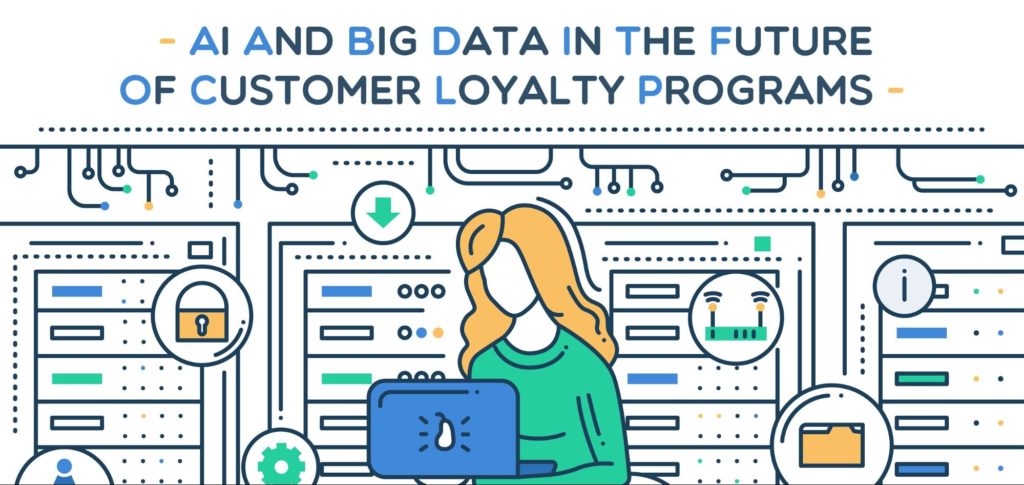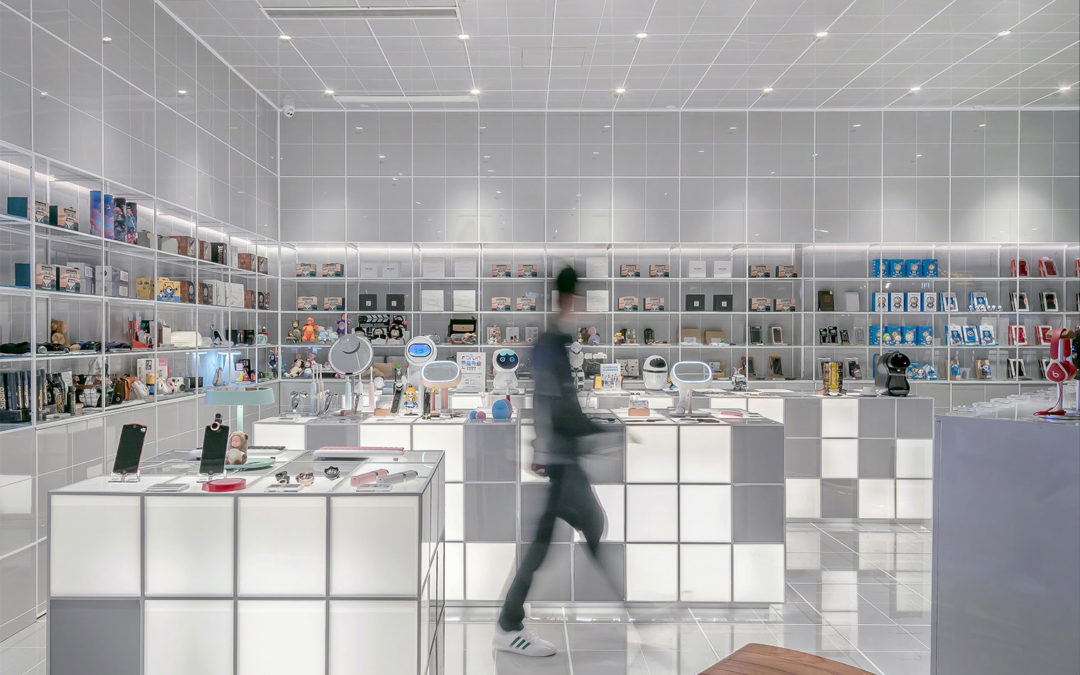
by Don Pingaro | May 30, 2018 | Commerce Strategy

Instagram eCommerce
The past decade brought many changes into the world of eCommerce, and one of the most prominent is certainly the key role social media now plays. It’s where companies promote their products and interact with potential customers, raise their brand awareness, and increase conversion rates. While Facebook is still the number one social media platform, Instagram has experienced enormous growth in the past two years and continues to grow every day, transforming it into a more-than-ideal tool for eCommerce businesses to expand their reach and get their names out.
As is the case with all other sites, you first have to learn a thing or two about how it all functions and what the users’ expectations are, but once you’ve learned the ropes, you can reap great benefits. Here are some useful tips on how to boost your sales using Instagram.
First steps
If you haven’t switched to a business account yet, you should do it right now. This feature presents numerous opportunities for large and small businesses alike. Not only does the biz account give potential customers a one-click “contact us” button, it also grants access to various analytics tools that will offer valuable insights into your engagement rate, impressions and your followers. This way, you’ll be able to track what’s working and what’s not, and change your approaches accordingly. You can also easily (paid)promote any posts you like, which has shown to work rather effectively for eCommerce businesses.
Get people to your store
When it comes to promoting your products, the problem with Instagram is that you still can’t put clickable links in your photo descriptions. In the past, retailers got around this issue by adding a link to their online store in the profile description; however, in doing this, customers are directed to your homepage (rather than a specific product page) where they may need to spend considerable time to find the product they saw on your Instagram.
However, new solutions have been developed to overcome this issue. One of Instagram’s newest features gives businesses the ability to tag products within posts. When clicked, the tags lead customers directly to the product page of your site so they can shop seamlessly. This feature is already available in many countries; all you need to do is get verified as an eCommerce account by Instagram (video), and soon, expect your online shop visits to skyrocket. If for any reason you can’t take advantage of this feature, there are similar alternatives that can make your feed shoppable.
Keep the quality high

If the content you post isn’t high quality, the sum of your efforts will be in vain. Instagram is a visual-oriented platform. As a result, you must put great care into the content you post. Make sure your photos match the standard resolution (1080 x 1080) to prevent compromising photo quality.
When it comes to showcasing your products, you should mix up high-quality flat-lay images, single product close-ups and photos/videos showing your products in use – focus on providing ample variety in the content you post. At the same time, also make sure your feed is neat and appealing. It’s suggested that retailers turn to professional photographers for best results. In addition, you should never exclusively post pictures of your products – hard selling is never an effective method. Rather, you should think about using branded imagery to showcase your brand.
Moreover, the key to building an effective social media channel is consistency. If you’re not posting consistently, your followers will get bored and leave, and you’ll wonder why you’re not seeing a return. For this purpose, scheduling applications come in handy. You can prepare your posts weeks in advance and schedule them to go live whenever you like. To decide what time you should post at, take into consideration your target audience’s time zones as well as general habits. Use your analytics to determine your optimal time to post, and try a variety of hashtags to boost your post reach.
Take advantage of hashtags

While it’s always better to outsource keyword research for your eCommerce website to an SEO agency, you can easily find the most effective hashtags to use on Instagram yourself. Take advantage of websites that keep track of each day’s most popular hashtags, and use them will multiply your posts’ visibility. In addition, learn what hashtags your competitors use, as this is a cheap but effective way to fight competition.
Be aware that you can use up to 30 hashtags in a post and you can either put them in the description or the comment section. Mix up your hashtags from time to time to prevent Instagram from misidentifying your posts as spam. It’s also useful to create a specific hashtag that only your business will use, which will help users browse your products on Instagram easily.
Be approachable

The main goal of any Instagram endeavor is generating engagement. The more engagement you can create, the more your account will grow, leading to a bigger reach, more brand exposure, and an increase in sales. Of course, the most important thing of all is that you are present. This means that it’s not enough just to schedule your posts and check on your Instagram once a week. You should be interacting with your audience every day in order to create a friendly and approachable image that will benefit your brand. Like and reply to comments under your posts, answer questions and be professional when it comes to resolving conflicts.
You can also take your interaction to the next level with a couple of methods that many businesses employ nowadays. First of all, you can write your photo descriptions in such a way that encourages commenting (for example: asking a question or encouraging people to tag their friends). Moreover, you should also track product pictures posted by your customers.
User-generated content is insanely powerful for attracting new customers, as people viewing your product for the first time are more likely to trust their friends and family than a business they’ve never bought from (think of it as digital word-of-mouth). Don’t forget to like and re-post some UGC content from time to time, just make sure you ask the customers permission to use their likeness first. This will show your customers that you care and they will be more likely to shop from you in the future as well. When you find this content, you can quickly add it to your company’s Instagram Story, generating double the content off a single post. Think about how you can build user engagement by running photo contests and adding “Who wore it best?” to your company’s Instagram Story… there’s a lot of potential there.
More promotion

To further promote your brand, one very effective method is reaching out to influencers. Some charge more than others for promotions, while others will swap shout-outs or mentions in return for your page doing the same. Another way to score placement on an influencer’s feed is by giving them some free merch to try out.
Send them some of your products and their followers will be made aware of your existence. The most important thing to pay attention to here is that you choose your influencers wisely – they have to be related to your niche so that their followers are more likely to be interested in your product.
Remember, everyone loves free stuff, not just influencers. Try to organize giveaways when you reach follower milestones like 10K, 50K, 100K followers, etc. Just make sure you comply with all the rules of hosting such events. You can also reward your followers by occasionally sharing discount codes to some of your products – this is a surefire way to convert more leads and show your top followers you care!
Final Thoughts
As you can see, the opportunities Instagram provides for eCommerce businesses are numerous. If used properly, they can give a massive boost to your sales. However, Instagram is just one of the many platforms you can use. For example, websites such as Pinterest can also give a boost to your eCommerce sales, but of course, different rules will apply there. That’s why it’s important that you get informed about the basics before you jump into it.
Guest Author Bio:
David Koller is a passionate blogger and copywriter for Media Gurus, mainly interested in SEO and Digital Marketing.

by Mario Ernesto | May 9, 2018 | Commerce Strategy, System Integrations

A sustainable firm needs loyalty customers – this is undeniable. Over the last century, retailers have been using reward programs as an effective tool to gain more repeat customers, and from this, build customer loyalty. However, the fourth industrial revolution is coming and the perspective on loyalty programs is consequently different. Marketers and business doers today realize the importance of AI and Big Data in determining repeat buying behavior. Hence, to take advantage of high technology in loyalty programs catches online retailers’ attention and requires a lot of intellectual and financial investment.
2018 will be the year of AI and Big Data

Customer loyalty programs should be perceived as a campaign designed to build and preserve interaction between clients and brands, not just to increase revenues. From this new standpoint, apart from investing in a powerful reward program, customer experience and satisfaction will become an increasing concern for businesses. There should be additional methods to form higher customer retention, which requires the application of technology, especially artificial intelligence (AI) and Big Data. Interestingly, 2018 may be the year which marks an outburst of AI in general and AI application in customer loyalty programs. This is represented through the figure of NewVantage Partners’ annual executive survey conducted within Fortune 1000 corporations which shows that a very large proportion, 97.2%, of these organizations are investing in AI and Big Data even though the levels of investment is being kept low. Also, according to the BPR Consulting research in 2017, nearly half of retailers would utilize AI to improve CX, and 55% would plan to focus on increasing customer loyalty within the next 3 years. In addition, according to Accenture, customers today tend to be enticed by programs or deals which are tailor-made for their personal needs, as they favor personalized rewards and specialized care. This, as far as I’m concerned, cannot be done without AI-based tools. These facts raise a big question to marketers: How to deploy AI in building customer loyalty programs in future?
What is AI?
There are quite a lot of arguments among experts about the term AI, also known as Artificial Intelligence. In 1956, John McCarthy explained AI as science and its application to making machines, especially computer programs, which are considered smart. These intelligent machines are able to perform some tasks as a human being would. To clarify, they are able to recognize speech, learn, make plans and solve problems in the way a human does. In this early stage of AI development, people both doubt and fear its potential power in the future. However, for a marketer or an e-retailer, there is no choice but to accept and prepare for its upcoming presence in every single aspect of business.
Artificial Intelligence is no longer a foreign concept to most people nowadays, especially in eCommerce. Customers are now used to receiving personalized emails, being greeted by their names and being offered customized services. According to Chiefmarketer, buyers are, in fact, totally okay with their personal information being collected and analyzed, at an appropriate and considerable level, to get better discounts, more precise recommendations and more personalized services. Such services are what shopping doers are expecting from online retailers without any awareness of what AI is. However, we marketers have to start keeping a close eye on it from now on.
What is Big Data?
The term Big data refers to data sets which are extremely large, so large that traditional methods of data processing are unable to handle them. We usually get Big data when collecting information from sources such as videos, audio, social channels, log files, websites and networks which are literally created in real time. Big data can be used to help computers analyze patterns, trends and associations which are often related to human behaviors and interaction. Big data contains information which used to be left untouchable, and by analyzing this data, we are able to make better and faster decisions.
How AI and Big Data can contribute to customer loyalty programs

Tailor-made customer experience
Buyers are becoming more difficult about what they purchase and how they are served in your online stores. Most importantly, customers’ expectations of the personalization in products and services increase as the customer-centric culture is spread among big companies like Amazon. From this, I know that the one-size-fits-all era has ended, that mass-production is no more than an old-fashioned trend and that free-size jeans are being replaced by personally-designed ones on the shelves.
Big Data powered AI systems have made a big step in analyzing and understanding customers’ needs. Now, you are able to collect necessary information and track customers’ purchasing history, shopping behaviors and preferences. Based on these ‘big data’, AI learns and makes a decision to timely offer buyers a personal touch, tailor-made products and personalized services.
Not only is this about sales or conversion rates but also customer loyalty. By deploying AI, customers really get that attention which they crave for today. They know that their problems are heard and solved personally. Also, they get extra benefits when shopping at the store. This is a major factor to retain buyers in this digital era – the era of global shopping just with a few clicks, also the era of commitment and loyalty being difficult to gain.
Even better experience
Bombfell deploys AI to help their stylists pick individually suitable outfits for their customers can be a simple example for the era of personalized services. With AI, user experience in an online store is optimized at the highest level. Customers, thanks to this, find themselves cared for and feel important.
Not only can they have products customized for individual’s needs like at Bombfell, buyers can be welcomed in the store like the way it is at bricks and mortars. Customers are greeted and called by their first names. Their voices and faces are recognized by AI and, thanks to this, all information about their purchasing history or shopping habits is remembered, like the way a shopping assistant in your favorite local store recognizes you. She knows that you love discounts, you often go shopping on weekends and are willing to pay a lot for trendy shoes. And, on a Saturday morning, she speaks to you in a friendly voice: “Hey we’ve just released a limited model of trainers and, because I know you’d love them, I’ve kept them for you with 10% off. Thank me later!”
Besides all that, AI will develop to the level that customers can comfortably communicate with online stores through chatbots. Hence, the response time will be sped up to tick-tocks. Algorithms are developed to enable machines to think like human beings and even to understand customers’ emotions in order to perform appropriate actions. Not only solving problems quickly, AI also helps to replicate a human-like communication atmosphere.
Customer satisfaction and personalized experience combined with tailor-made services are the key points in showing buyers that they are highly appreciated by the brand and consequently in laying a great foundation for building customers’ trust. This is the fundamental of cultivating customer loyalty.
Challenges for brands
Questions about safety and privacy
As mentioned above, customers are willing to share their data for a better price, customized services or more convenience. However, worries about privacy and information security are still very much real, and they form a barrier between customers and brands in building trust. Shoppers, on one hand, understand that their data is collected and love the benefits coming from it. On the other hand, they question about the level at which their personal information is exploited and how it is used. Is their data safe when AI is that powerful? Are e-retailers able to protect them from frauds and identity theft when cybercrime is increasing?
To win customers’ trust is a big challenge that eCommerce websites are facing in building customer loyalty. Personally, I will definitely leave an online store which gives me doubts about security. For example, as a travel lover, I used to make a room reservation online on a well-known hotel booking site; however, one day, I was warned that this website leaked customers’ confidential information including credit card number, CVC and expiration date. Even though there was no frauds or misuse of the data recorded, I decided not to give this brand any second chance.
So make sure you provide your customers an optimized security solution, and more importantly, make a big commitment to providing the highest level of customers’ safety and privacy. They need to feel peace of mind by knowing that their data has always been and will only be used to improve their shopping experience and to give them personalized offers.
Technical issues

Big data is actually not difficult to be collected, yet it is hard to be captured, organized and analyzed. Different sources of data are always ready to be deployed but remain unused due to lack of structure and technical know-how.
The biggest challenge here is how to, through AI, really understand data and to have an overview of it while too much information comes from various sources such as invoices, emails, social media and CRM. Also, how to turn big data into patterns, trends or associations which are useful for marketing activities and customer insights in real time is extremely important.
Just like other actual personal relationships, that customer loyalty is built on trust, the consistency of high-quality services to buyers and unchanged commitment form a long-lasting relationship. That e-retailers are considering applying AI in building customer loyalty shows their dedication to it in spite of many difficulties.
Final words
The development of AI and Big data, in recent years, has given online retailers both opportunities and challenges. In the next decade, digital stores will be equipped more optimized tools based on AI, and through this, they are empowered to strengthen customer relationship and enhance customer retention. This is a technology competition and I believe that the one who wins the game will also win the customer’s heart.
Guest Author’s Bio:
 Summer reads and writes blogs about marketing and eCommerce. She’s especially interested in solutions which help merchants improve their customers’ shopping experience and increase customer engagement for Magento 2. “One of the best ways to enhance user experience on an online store is to provide a better Layered Navigation” says Summer. Summer reads and writes blogs about marketing and eCommerce. She’s especially interested in solutions which help merchants improve their customers’ shopping experience and increase customer engagement for Magento 2. “One of the best ways to enhance user experience on an online store is to provide a better Layered Navigation” says Summer. |

by Don Pingaro | May 4, 2018 | Press

Hasan Elkomey Takes Helm of Redstage’s Partner Channel
Redstage is pleased to announce the latest addition to our team and new SVP of Strategic Partnerships, Hasan Elkomey. As the former VP of Digital Transformation and Strategy at Damco, Hasan will drive Redstage’s partnership initiatives, leveraging his 15 years of insight to drive growth. Hasan’s experience working with complex organizations will help maximize value for clients as well as industry partners. Furthermore, the new SVP aims to accelerate company revenue by enhancing organizational efficiency and shepherding in the next wave of customer experiences.
About Hasan
Apart from Redstage, Hasan serves on Rutgers University’s board for the Center of Innovation — Design Thinking as the program’s Chairman. Over the years, Hasan has become known as an industry thought leader for his work fostering relationships with some of the world’s most recognized brands. He regularly speaks at digital industry events around the United States.
Read the full press release on PRlog.com.

by Don Pingaro | May 3, 2018 | Press, System Integrations

We’re excited to announce a new partnership with Akeneo, a leading provider of product information management (PIM) software.
About Akeneo
Akeneo is a fast-growing software company that offers an open source PIM (Product Information Management) solution that dramatically simplifies catalog management processes. Akeneo PIM makes it is easy for B2B and B2C retailers and brands in any market to collect data from any source, enrich and control the quality of product information, and distribute it to multiple channels such as eCommerce, mobile, print, and points of sale. As Redstage’s latest industry partner, the two companies plan to strategically align initiatives to maximize value for online merchants.
The Product
While many eCommerce companies start out managing their product information with spreadsheets, they soon find out this method is unsustainable, but only when it’s too late. When trying to scale, companies find it difficult to properly manage an ocean of spreadsheets across sites, brands and more. This inevitably leads to a perpetuating, toxic cycle of improper product information being shown to customers, leading to a boatload of issues.
Unlike spreadsheets, the Akeneo PIM is custom built for managing product info across websites, eCommerce platforms, print catalogs, points of sale, mobile apps and more. As a result, the companies that switch from spreadsheets to the Akeneo PIM report a 50% increase in productivity, 30% increase in data quality, four times as many conversions, a faster time to market and lastly, lower return rates.
A Strategic Partnership
As a technology-forward eCommerce company, the Redstage team is on a constant search for the latest and best tech to simplify and streamline our clients’ processes. We look forward to working with the Akeneo team and sharing the incredible advantages of their platform with our clients.
Learn more at Akeneo.com or read their latest white paper on optimizing product value through PIM.

by Don Pingaro | Apr 17, 2018 | Commerce Strategy, System Integrations

eCommerce baked-in customer service as a standard. Perhaps early innovators recognized its importance as a differentiator from in-store retail, or maybe it came naturally. Regardless, many traditional retail giants chose to ignore it altogether. In the stories that follow, we’ll explore vast disparities in customer service driving traditional retailers toward bankruptcy while simultaneously skyrocketing eCommerce sales.
Good CX Demands Good Customer Service
Major retailers now seemingly compete with airlines, telecoms and power companies for the worst customer service. The key difference, however, is the range of alternatives. Most regions of the U.S. don’t get to pick between more than two horribly aggravating cable providers, while anyone in the world can choose Amazon over local retailer. As a result, the need for retailers to optimize their customer experiences through customer service is paramount. However, those who only recently realized this may be too late.
Jura Live! A Customer Story:
“Jura LIVE! allows customers shopping online to make live video appointments at their convenience, from the comfort of their own home. Customers can see the products in action in real time and leverage the knowledge of a sales rep. to help them make a purchasing decision. For a luxury product such as a super automatic coffee & espresso machine, this adds a significant amount of convenience to the customer’s experience while also dazzling them with high-end technology. These types of high-touch online experiences help the sites that have them dominate those without. Unfortunately, most brick & mortar stores don’t offer these experiences because they refuse to adapt.”
-Dave Gardner, Sr. Account Executive & Team Lead at Redstage
How Retail Heros Became CX Villains
Sears, JC Penney, and Toys “R” Us are known for major missteps that downgraded their in-store experiences and alienated customers. Sears simply stopped investing in its stores. Years ago, company leadership decided to introduce a poorly-managed customer loyalty program that caused much more harm than good. The “Shop Your Way” program caused extended checkout times; both for customers waiting in line behind someone signing up for rewards AND for loyalty members who facing constant discrepancies in “deal” prices at the checkout.
The Fall From Grace

When sales declined, products began to downgrade, the stores themselves fell to disarray, and customers naturally opted for other retailers like Macy’s and Home Depot. As a poorly planned remedy to decreasing sales, Sears chose to cut in-store staff in half across their locations, propelling worsening structural conditions that led to closures all over the U.S. To this day, the company continues to pump products into stores that no one will buy, without the necessary human capital to even unpack them.
A Sears Auto Story
Recenty, Redstage’s CEO Adam Morris had his own customer service blunder at Sears. He entered Sears Auto looking for a particular item, couldn’t find what he wanted, and exited the store only to discover his car had been towed. According to Morris, the towing company contracted by Sears was watching the security cameras while he was inside. Because he parked in a space for “Sears Auto Customers Only,” and hadn’t made a purchase, he wasn’t considered a customer, which allegedly gave the towing company license to tow his car.
In an attempt to get assistance from Sears, Morris spent hours on the phone with a “rude or unhelpful” customer service representatives. At the end of the ordeal, one rep told Morris to file a police report if he felt he was wronged. He had to pay to get his car back — more than the cost of the item he initially intended to buy.
Think he’ll be heading back to Sears anytime soon?
Alienating Your Audience

JC Penney’s downfall came when it decided to switch to “low everyday prices” rather than focusing on their weekly coupon deals — something that created buzz from local customers and drove them to stores. At the same time, JC Penney switched focus from inexpensive products to more upscale merchandise, further alienating their customer base. As a result, shoppers decided to shop elsewhere. For a company founded on a middle class audience and low prices, this change was a signal for lifetime shoppers to exit, with seemingly no plan in place for attracting a higher-paying target audience.
Retail Giants’ Company Value Shift (2006 – 2018)
|
|
2006
|
2016
|
2018
|
06 – ’18
|
|
Company
|
Value ($B)
|
Value ($B)
|
Value ($B)
|
% Change
|
|
Sears
|
$14.3
|
$0.9
|
$0.3
|
-98%
|
|
JCPenney
|
$18.1
|
$1.7
|
$1.2
|
-94%
|
Source: Peter Diamandis, “The Future of Retail“
Know Your Customers (or else)
Toys “R” Us CEO David Brandon mentioned in a recent SEC filing that the toy giant’s inability to invest in customer experiences in-store accelerated the death of the company. Last fall Brandon said the company’s mounting debt caused them to lose their competitive edge “on various fronts, including with regard to general upkeep and the condition of our stores.” In addition to the “general upkeep” Brandon mentions, if you’ve walked into a Toys “R” Us outside of the holidays, you’d understand. The massive store would appear as a moonscape, cold and nearly lifeless, save one or two employees and some barely audible music. Is that the environment that makes kids and parents think of fun?
This blog post does an excellent job of describing how Toys “R” Us could have boosted their customer experience through the roof, and honestly, it was probably within reach. “Special store events could include Nerf gun battles and dress up contests. Store representatives could excel at providing toy recommendations for particular age groups and interests (ever wondered, “What the heck do a get for my 8-year-old niece for Christmas?”).” These are the customer service based experiences consumers expect in our high-touch world. With eCommerce personalizing every customer interaction, it’s no wonder retail’s value continues to diminish.
Here’s Why Retail Will Die
As we can interpret from the examples above, traditional retail’s refusal to adapt (or perhaps retail’s lack of understanding about eCommerce) will be the industry’s ultimate downfall. One-time giants like Sears are ignoring systemic issues that directly impact in-store and over-the-phone customer experiences. Customer-minded marketing, store upkeep, and customer service — once staples of the retail experience — are being outsourced, downgraded or eliminated.
How To Bring The Magic Back

In a last-ditch effort to get customer engagement, Toys “R” Us launched an AR app called “PlayChaser” to create gamified in-store experiences. There were a few issues with this, like parents who didn’t want their kids running around a massive store with their tablet — and also the fact that the company had already declared bankruptcy — but the intent was there. Toys “R” Us was ready to repent for decades of customer boredom, but it was too-little-too-late.
Retailers seeking a strong, successful revival need three things:
- A unified strategy that blends digital and physical experiences while thinking realistically about in-store capabilities (like employees, upkeep, and tech).
- A highly-tailored online experience that combines hardcore marketing tactics with artificial intelligence to boost customer retention & sales (watch video).
- Unrelenting customer service that makes everything easier for the customer (yes, we mean everything). Understand your customers and meet their demands.
Final Thoughts
Circuit City recently announced an ambitious plan to resurrect the company with an eCommerce focus and an impressively cool omnichannel strategy. The digital retailer relaunched February 15th and is moving forward rapidly. If Circuit City can make a comeback, maybe it’s time for other retailers to get with the program.



















Recent Comments